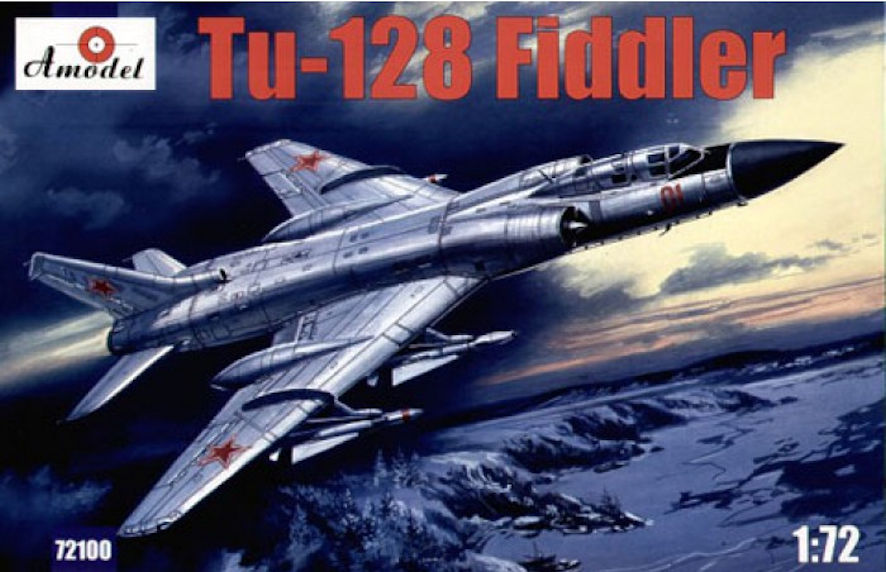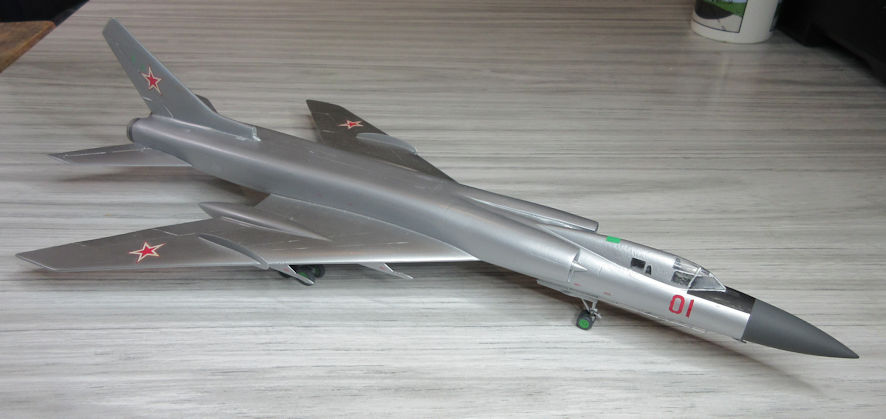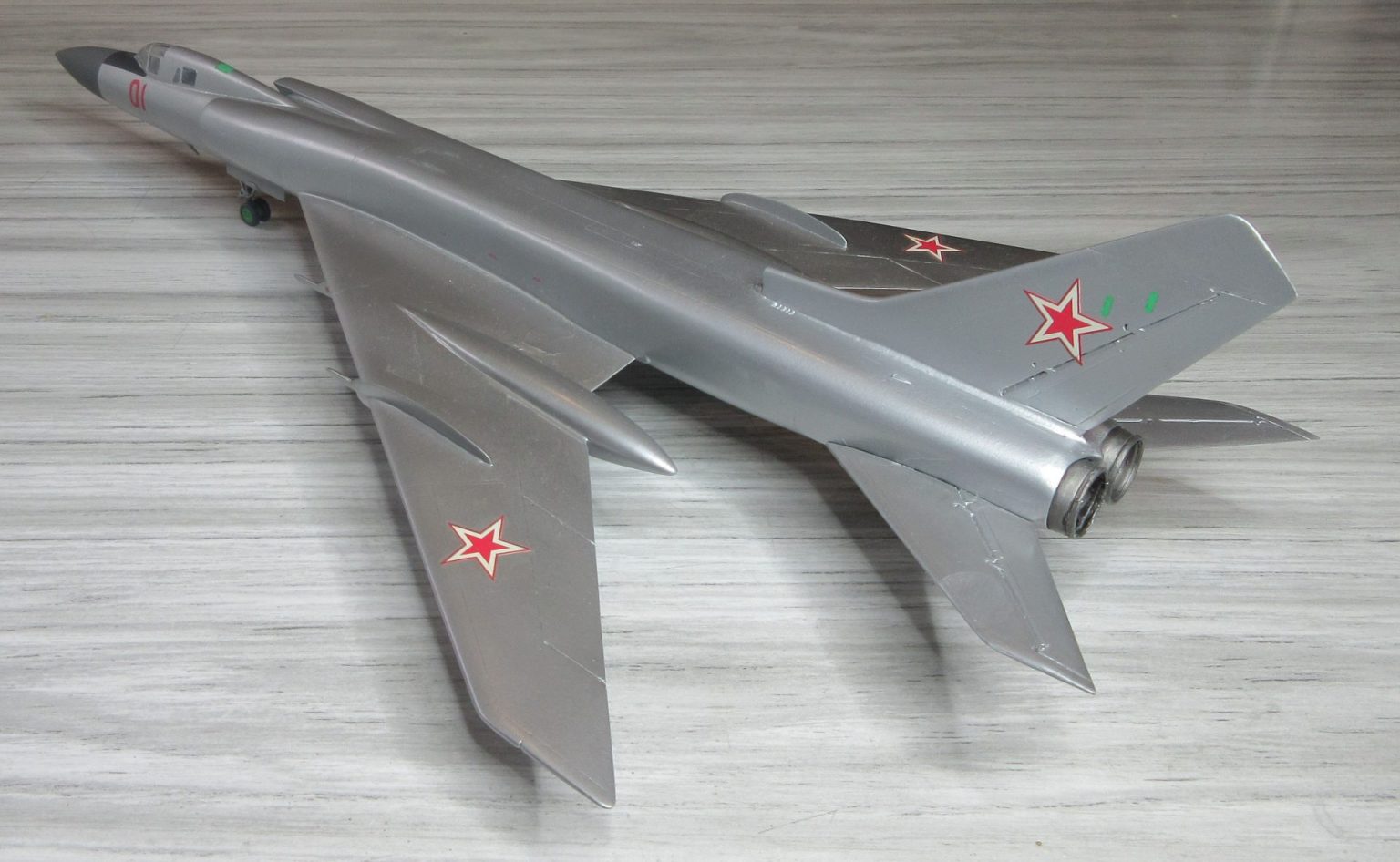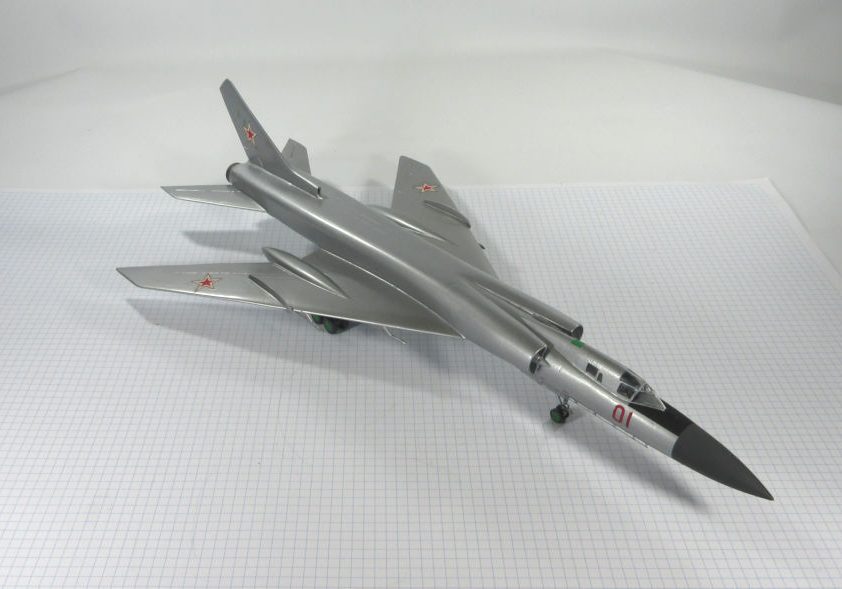In the 1950s military planners on both sides of the iron-curtain turned their attention to designing weapons systems capable of intercepting and destroying enemy supersonic bombers armed with nuclear weapons before they could deliver their payloads. One of the systems developed on both sides was an interceptor capable of flying long ranges at high speed equipped with a powerful radar to detect enemy aircraft at long distances and armed with air-to-air missiles to destroy the attacking bombers. Russia and Canada in particular had vast areas facing north and designed similar systems. The Avro Canada CF-105 Arrow was a large supersonic missile platform that was eventually axed by the Canadian government. The Russian response to this threat was the Tu-128, given the NATO reporting name (Fiddler).
The Tu-128, initially designated the Tu-28, was developed due to the failure of earlier, smaller interceptors to extend the area defended far enough from Russian territory to prevent a successful attack. It’s design was based on the earlier Tupolev Tu-22 (Blinder) supersonic bomber that was designed in the 1950s but proved largely unsuccessful.
The Tu-128 followed the same basic design with a swept back wing with the main undercarriage housed in trailing edge pods. It was extremely large for a fighter but it was not intended for any air superiority role and was incapable of dog-fighting. It’s large size was necessary to give it the fuel capacity to give it a combination of high speed to fly as far out as possible to intercept attackers and a loiter time of about two hours so it could remain on station waiting for any attack. It’s size was also necessary to carry the large radar (known as ‘Big Nose’ by NATO) with a detection range of about 200km (124 miles) and the large air-to-air missiles.
The development aircraft (Tu-102) first flew in 1959. The first production verison, the Tu-28 (Fiddler-A) entered production in 1963 and the Tu-128 (Fiddler-B) subsequently replaced it in production. When production ended in 1969 about 300 Fiddlers had been produced, about two-thirds of them remaining in service into the 1980s. A small number of trainers were also produced with an additional cockpit forward of the pilot’s cockpit, replacing the radar. The Tu-128 was gradually phased out in favour of newer aircraft such as the MiG-31 although a few may have remained in service as late as 1992.

Amodel are one of that collection of Eastern European kit makers that seem to have become household names in the past few years. They offer an extensive range of all kinds of Russian aircraft from the gigantic to the tiny, almost always containing a myriad of tiny parts that have to be assembled into a series of larger components that then go together to make up the completed model. I gather that this company’s method is dictated by the size of the moulding machines available to them but, whatever the excuse, opening an Amodel kit is always a daunting experience.
The other problem with most Amodel kits I’ve assembled is the soft light grey plastic they use – there’s a lot of cheese on the market with greater strength than this stuff. After struggling with several Amodel kits I’ve come to the conclusion that Amodel is the Mach 2 of the Eastern European manufacturers. The difference between the two is that with a Mach 2 kit you get a few vaguely moulded pieces of plastic that you have to refine to make a model while with an Amodel kit you have to assemble lots of small pieces to make up the larger pieces that you then have to refine into a finished model. I’m not sure which one is worst.
I have to think back to the Testors B-2 model to recall a kit that was so hard to assemble – in fact it was a much tougher model to complete than the B-2. There were many occasions when it almost went in the bin because I’d had enough of it but, as usual, a week or two away from it seemed to make the problems go away – until I started work on it again. If I were that way inclined I’d say this kit had a mind or its own – and an evil one at that – that was sent to drive me mad. The only thing that did save this kit from the rubbish bin of fate was a long article on the internet that detailed many of the problems an earlier modellers had come across in his attempt to make a model from this kit.
It’s almost impossible to know where to start with this kit… Okay, let’s start with the cockpit which is a combination of things like floors, side walls, instrument panels and seats that seem to have been designed to not-quite fit and tiny little fragile bits like controls that are more interested in breaking than going where they are supposed to go. The best thing that can be said about all this is that you can hardly see it all through the tiny cockpit windows on the finished model. Talking of which, the engravings on the cockpit transparency doesn’t seem to correspond with the shape of the windows on the museum Tu-128 that are easily found on the www. You’d think the Amodel people might have seen them too, or do they just make things up?
Let’s leave a lot of the other dreadful stuff out. The exhausts that needed so much superglue to hold the misshapen bits in place that one finally fell to bits just as I was fitting it into place during final assembly or the undercarriage legs that are made up of so many tiny little bits that I simply left some of them off in sheer frustration. (I bet you can’t tell the difference) There were the wings that are made up of several parts and so soft and flexible that I finally gave up trying to engrave the control surfaces and the inboard flaps that I simply could not align squarely despite calling on the assistance of all the deities known to mankind. The wing fences and weapons pylons that required a lot of surgery to make them go where photographs of the real thing suggested they should go, which didn’t match with the instructions. As for the weapons supplied in the kit, they went into the bin because I figured it would be easier to scratch build them from pieces of foam rubber than use what was supplied in the kit. I could go on…
In the end I won. It got to the stage that I didn’t care what the finished model looked like, it wasn’t going to beat me. Actually, it doesn’t look too bad although it does need the missiles under the wings to complete the picture. But even though I finished it, I glance across at it out of the corner of my eye and I’m sure it’s smirking at me, evilly.


Leigh Edmonds
May 2006

